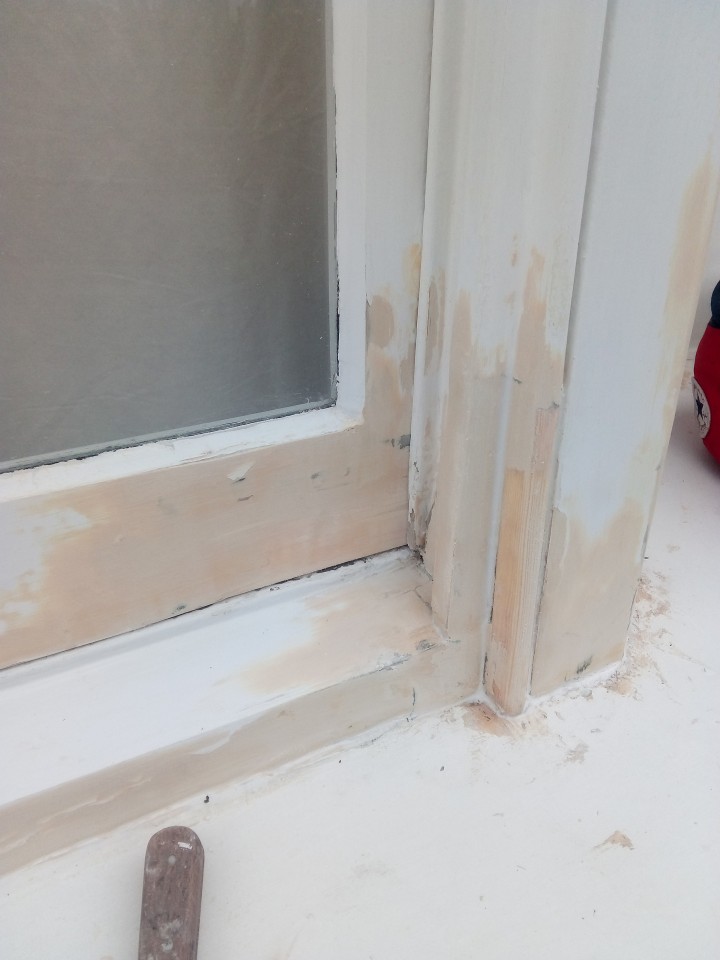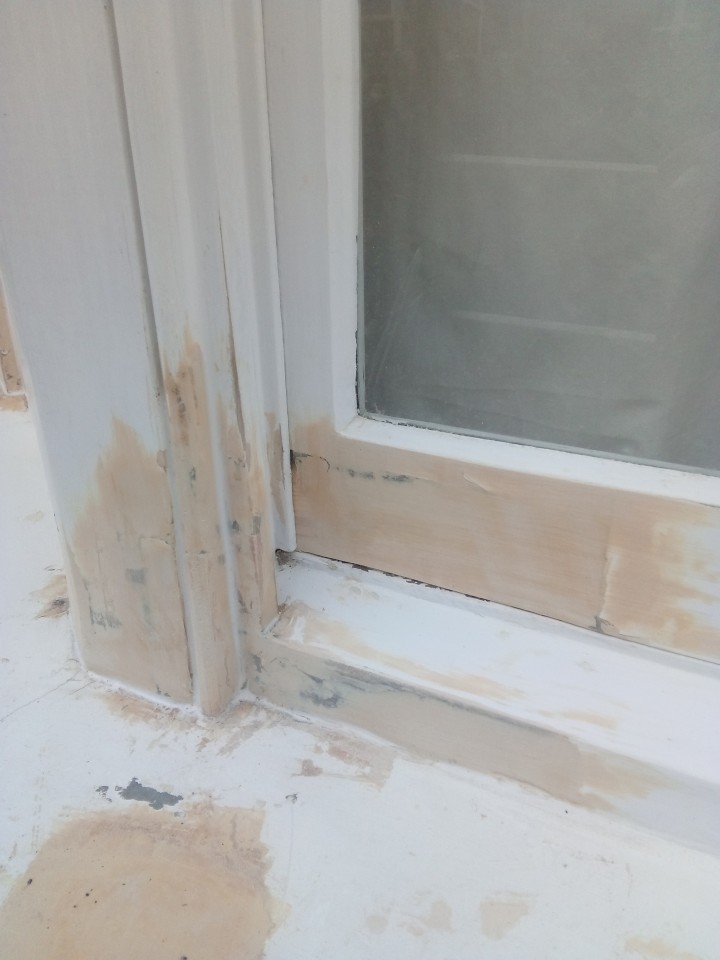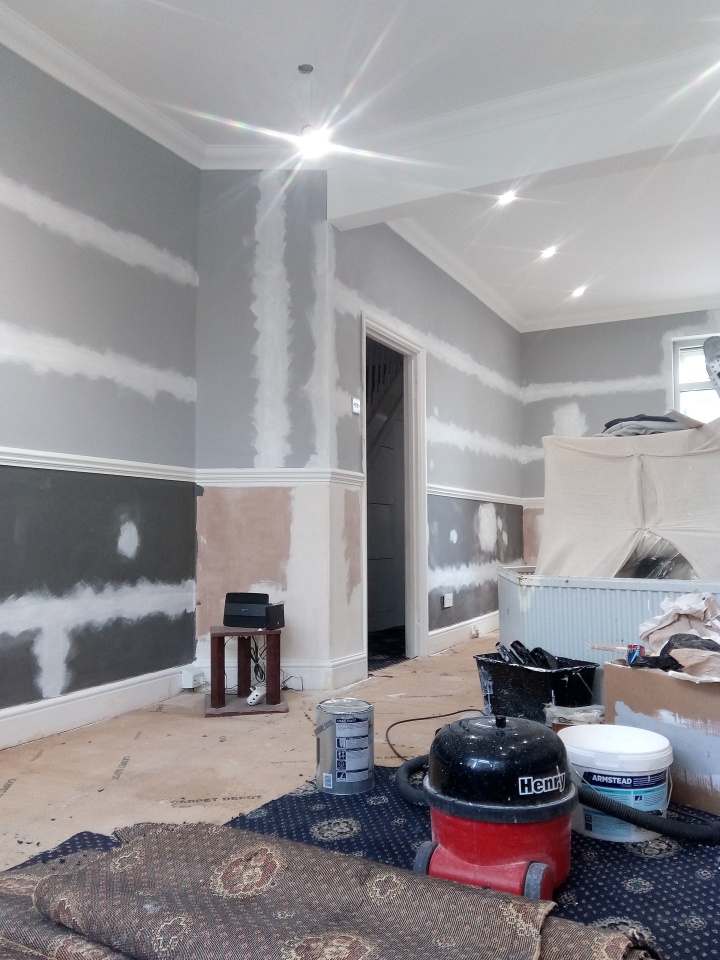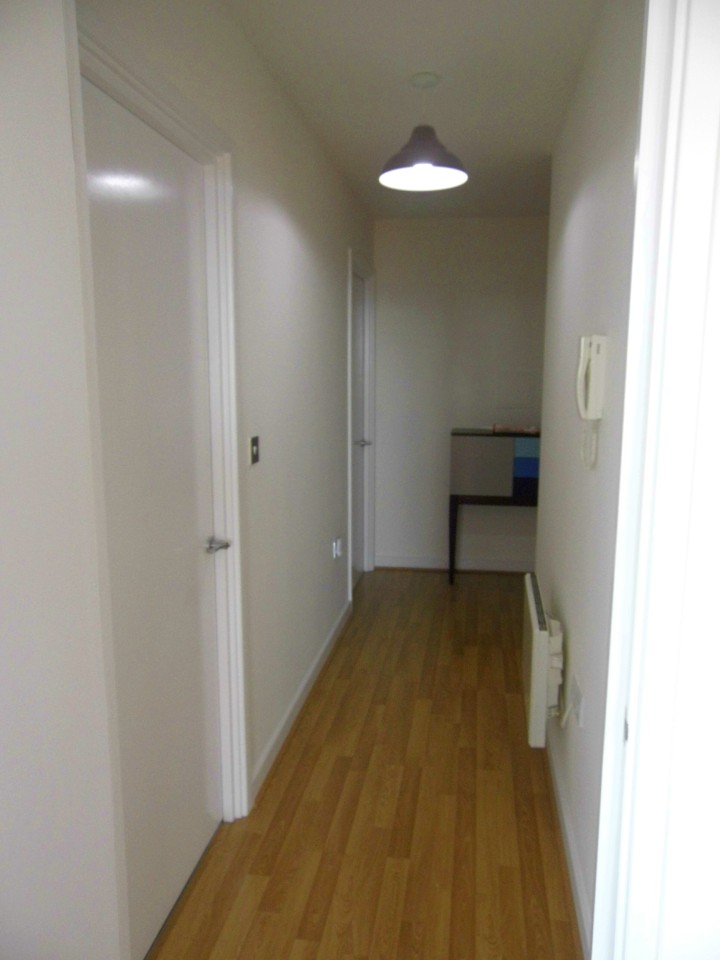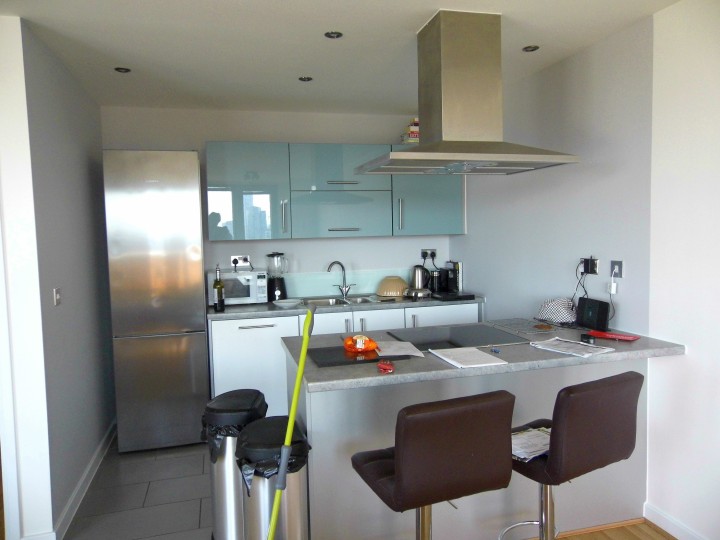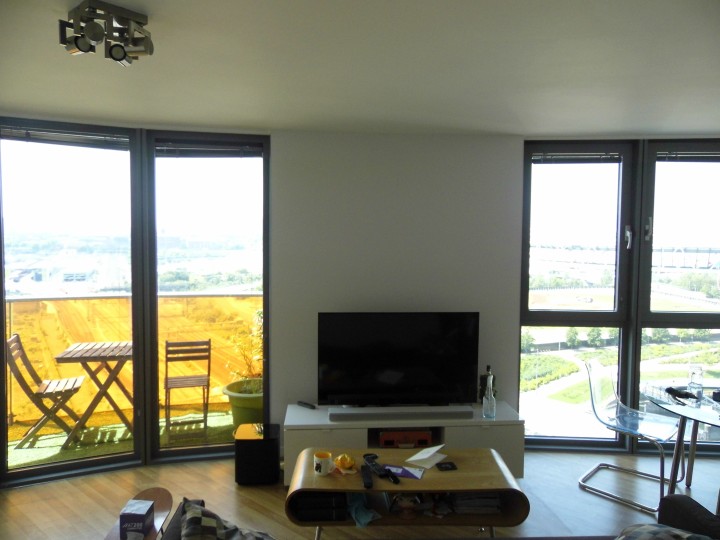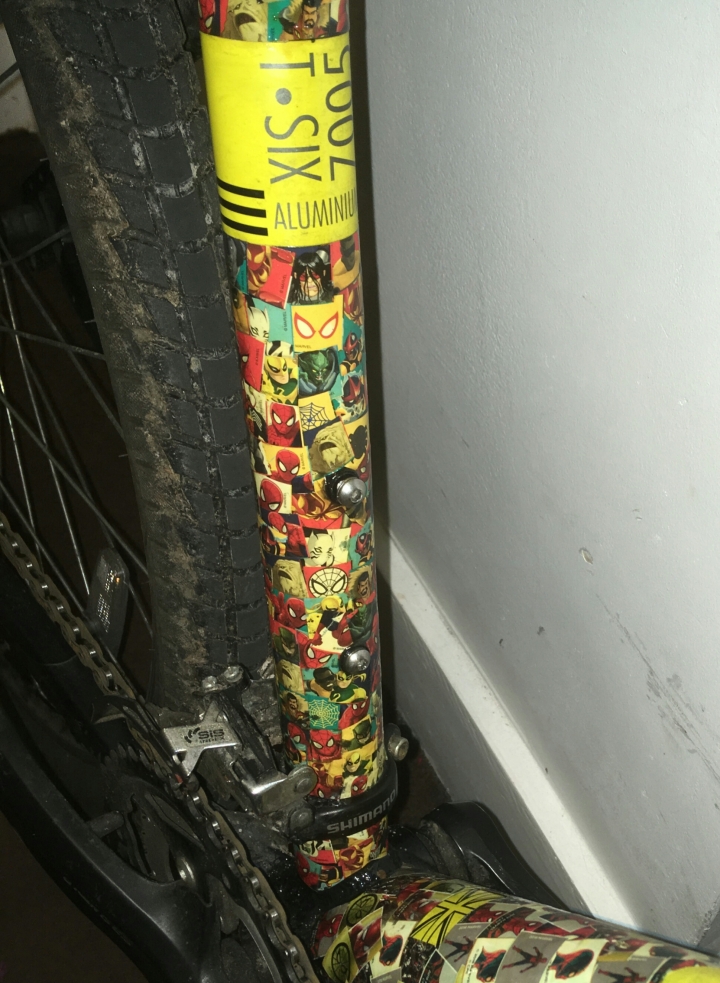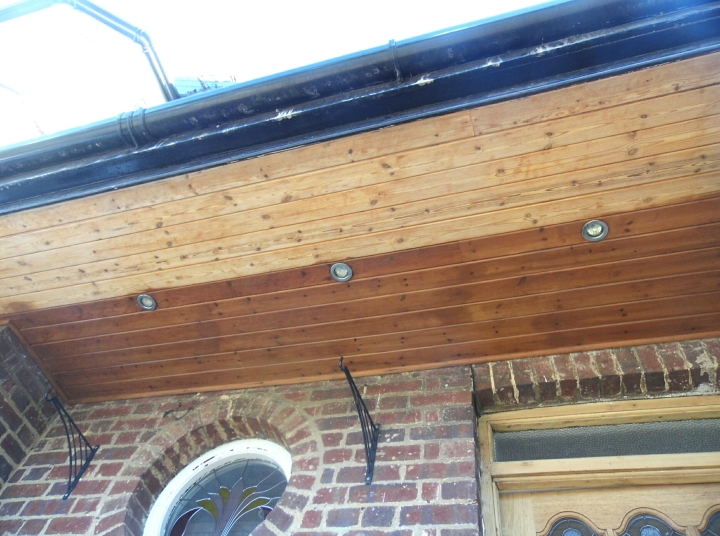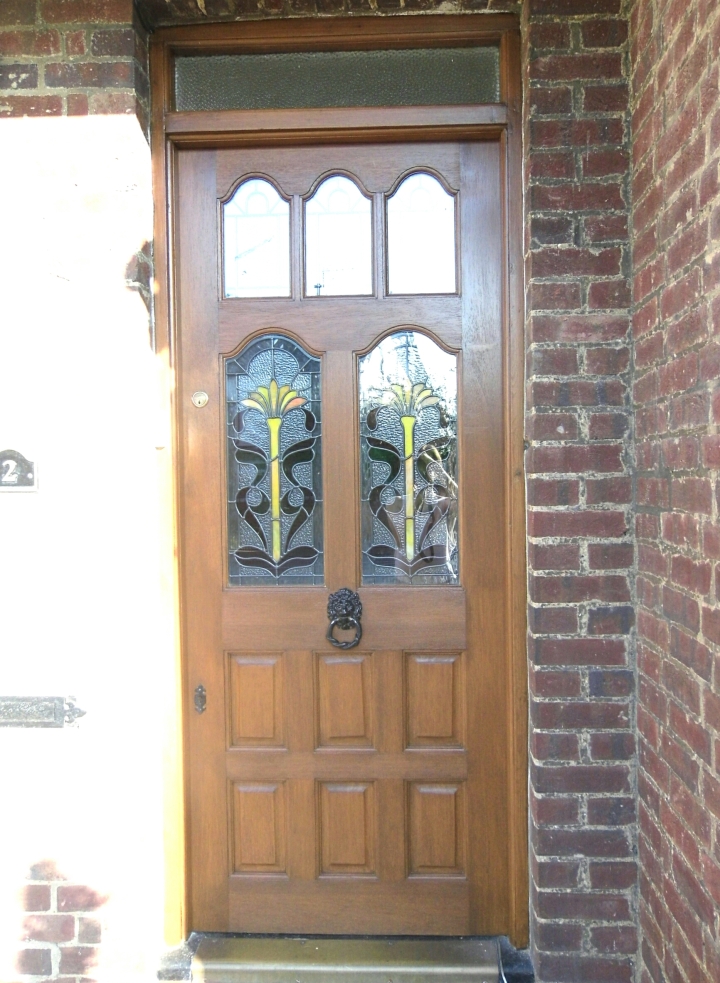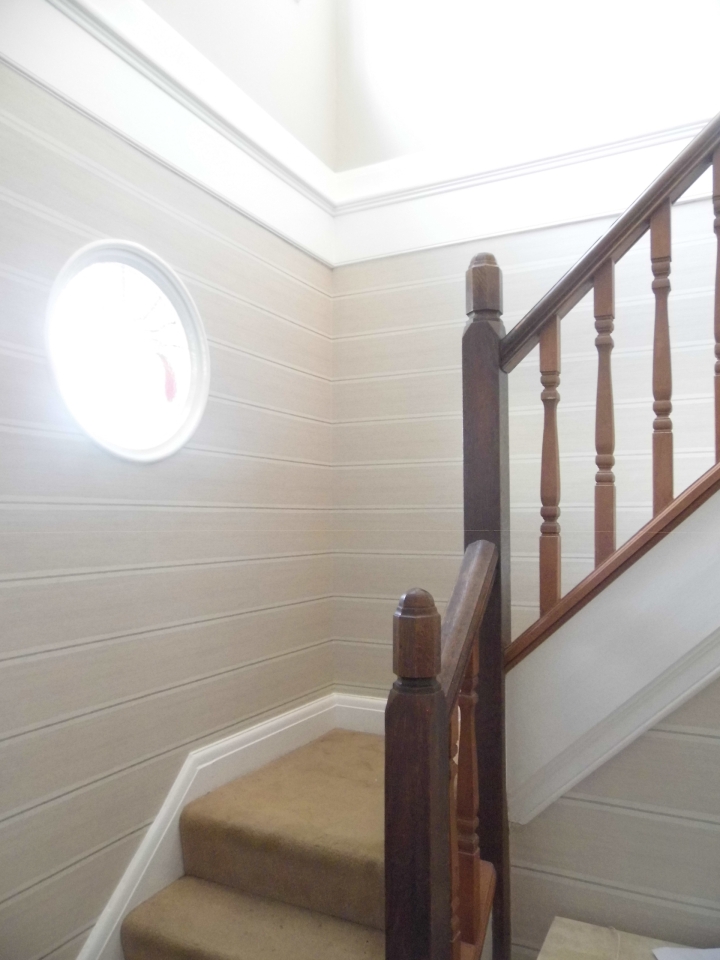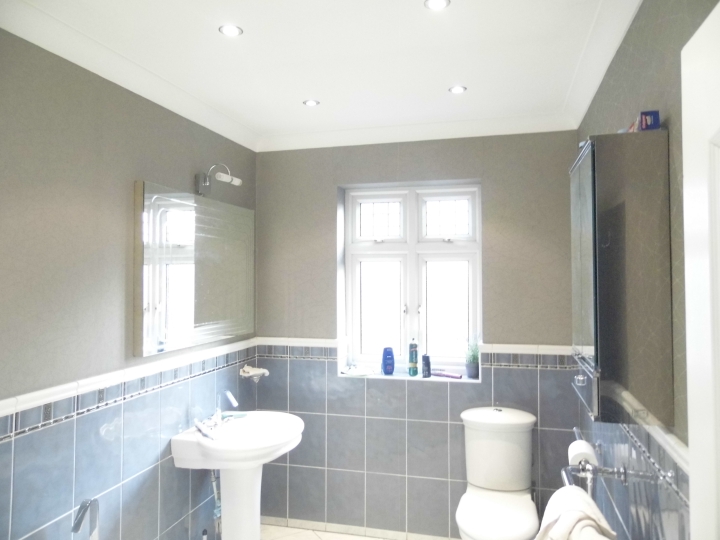
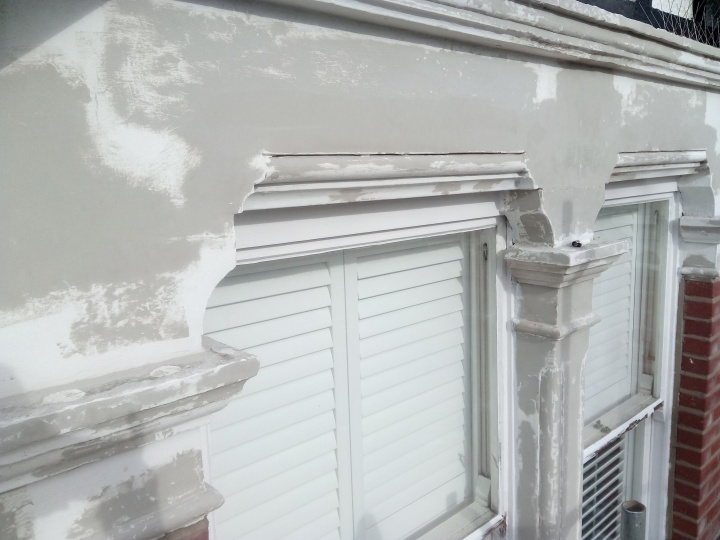



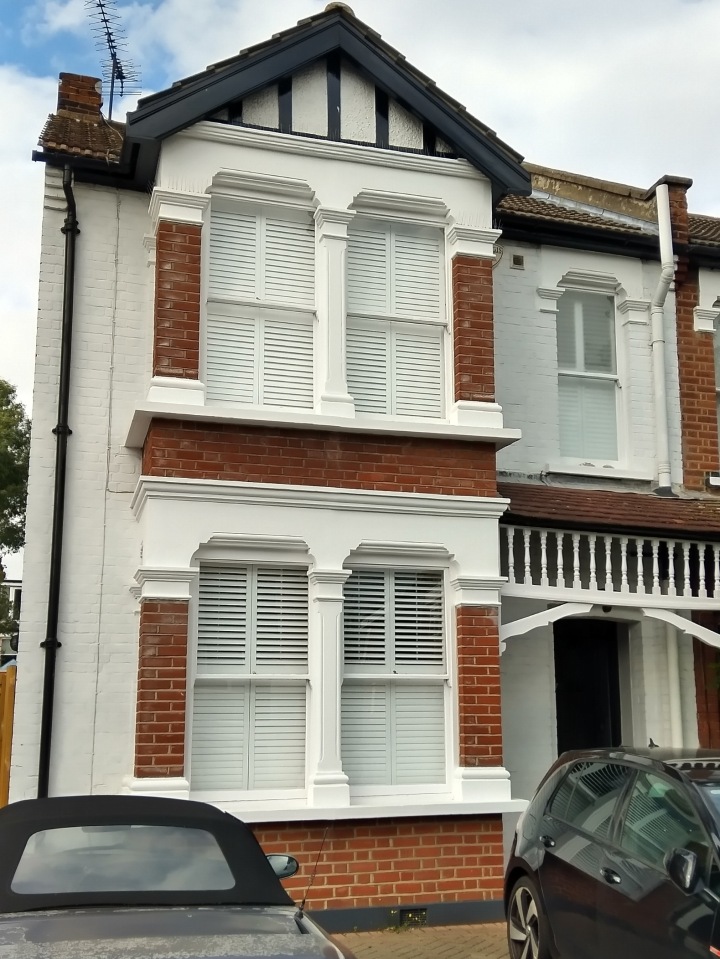
The stone was scraped off to remove the old flaking paint. Cracked joints in the stone work were opened up and cleaned out and all the stone work was rubbed down to flatten the surface before filling. Some of the stone work had deteriorated with age and had lost its shape. To fill, repair and to reshape the damaged stone I used a specialist masonry repair filler called Toupretlith. Once the toupret was dry and had been rubbed down I applied a coat of stabiliser to all the filled areas to strengthen the repair. To finish the stone work I applied two coats of Dulux trade all seasons masonry paint.
The sashes were scraped off and thoroughly rubbed down to remove any loose paint and putties. With all the loose material removed I applied the first undercoat, I used a Dulux trade weathershield undercoat.
Any defects in the wood work were filled using a two pack wood filler and using linseed oil putty I replaced the missing putties.
After filling the windows were give another thorough rub down before applying the second undercoat. To finish the windows were buffed with a fine paper before applying a coat of Dulux trade weathershield gloss.




